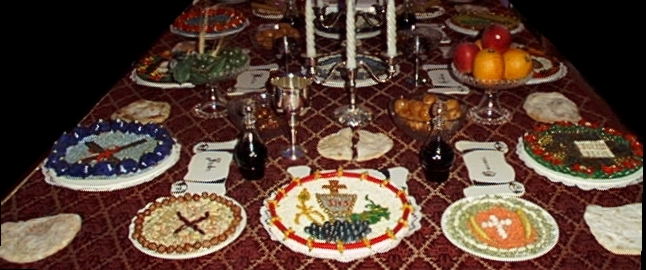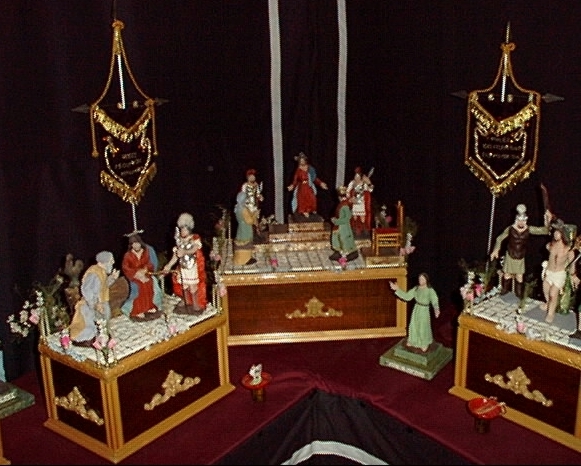
Il-Mejda ta' l-Appostli
Literally meaning the Table of the Apostles, il-Mejda ta' l-Appostli consists of a laid table with various plates containing pictures connected with the Passion of Christ made from coloured pasta, salt, rice or semolina. The laborious work behind these pieces of art is thrown away as soon as the Good Friday festivities are over because the pictures cannot be stored. Work starts in October and involves the laying of coloured pasta or rice by a tweezer over a bed of semolina according to the design of the artist. The pictures made entirely from semolina require much more patience. The coloured semolina is deposited by means of a teaspoon to form beautiful pictures. Generally a set of vari (statuettes modeled on the statues used in the Good Friday processions) complement the display.
The origin of this tradition dates back to about 400 A.D. when the Pope used to invite 13 priests of different nationalities for the commemoration of the Last Supper after which they were his guests for supper and he waited on them himself. The Knights of St. John organized something similar at Birgu. A long table with 12 loaves of bread was laid and the Apostles were represented by 12 knights. The Grandmaster washed the feet of the 12 poorest men in Birgu just as Christ did to his Apostles in his Last Supper. The laying of the table continues up to the present day in Birgu. Another one at Bormla, which is very popular with Maltese, displayed for the first time in 1954 artistic plates and a set of small statues representing the Way of the Cross. Various other tables are held throughout Malta and Gozo by organizations and individuals.

Artistic plates made from coloured pasta
Mejda ta' l-Appostli set up by Charlie and Paul Bonnici

Vari displayed by Charlie and Paul Bonnici
References:
Bonnici, B., Il-Gimgha l-Kbira f'Malta, SKS (Malta), 1998.
(c) Connie Bonnici 1998
This page hosted by Geocities